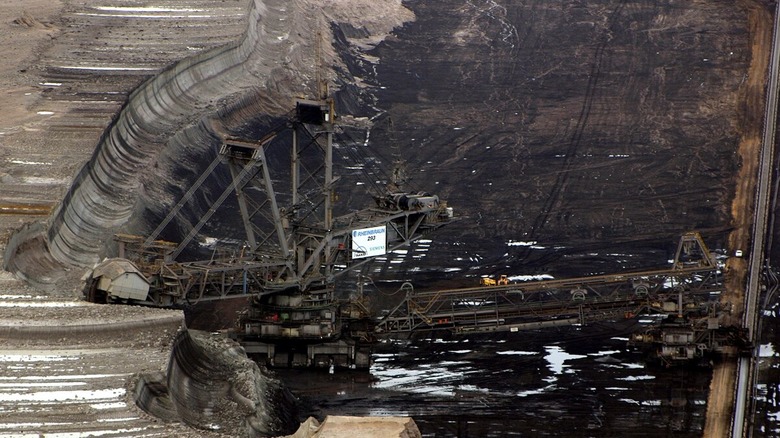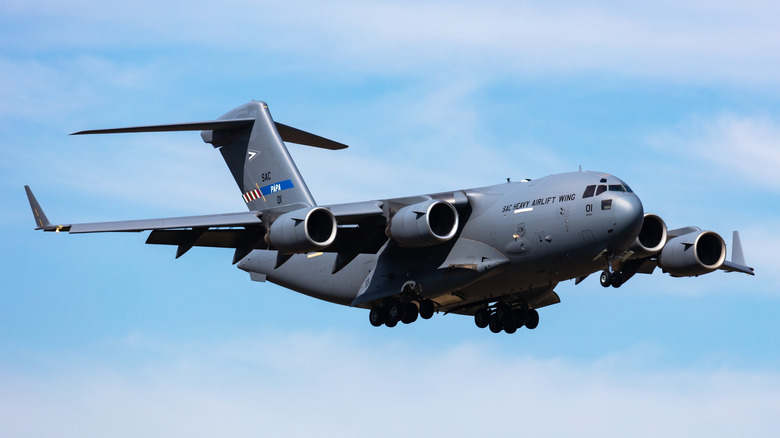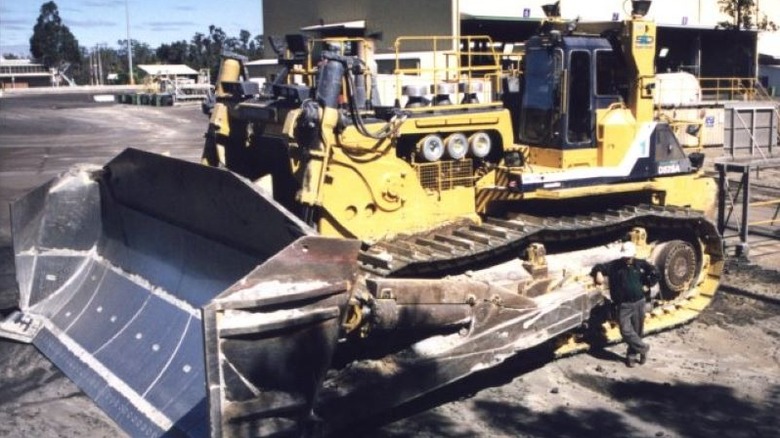10 Modern Machines And The Incredible Amount Of Energy It Takes To Keep Them Moving
Since the rise of modern industry, ever larger and more powerful machines have impacted everything from mining operations to personal flight. However, every machine needs a power source, and the biggest ones can require a seriously huge amount of power.
Whether exploring the limits of space or moving people as efficiently (and quickly) as possible, machines use a wide variety of fuels. Everything from gasoline to electric power to jet fuel to liquid oxygen drives some of the most enormous, efficient, and valuable modern machinery in the world.
Some, like Space X's rocket engines, use an enormous amount of fuel, while others, like the Aeromarine Merlin light aircraft, take gas-sipping efficiency to new heights.
In honor of the accomplishments of the engineers, tinkerers, and visionaries who build and operate the world's most incredible machinery, let's examine the operation of 10 incredible machines and the fuel requirements that keep them running.
Boeing 747-400
Throughout the history of the jet age, humanity developed an unprecedented ability to travel enormous distances. The efforts of engineers, adventurers, and pilots over the latter half of the 20th century whittled journeys that once took weeks or months down to mere hours. But that came at a cost.
Boeing began development on the 747 jumbo jet in 1966 at the behest of Pan American chief Juan Trippe. Increasing demands for jet travel congested the world's airports. New planes with larger passenger capacities alleviated some of the problems. The Boeing 747 debuted in 1969 as the world's largest passenger jet, with room for 400 passengers. It reigned as the "Queen of the Skies" until it was overtaken in 2005 by the Airbus A380 as the largest passenger aircraft.
The 747-400 variant that debuted in 1989 ultimately had a capacity of up to 700 passengers and a maximum takeoff weight of 875,000 pounds. All that mass requires a lot of thrust, which Boeing provides via four wing-mounted engines built by Pratt & Whitney or General Electric.
Depending on the configuration, the Boeing produces up to 56,651 pounds of thrust per engine. All that power requires field, and though the 747 received praise for its efficiency and range, it burns up to a gallon per second. That's 60 gallons of Jet-A fuel for every minute of flight.
Falcon Heavy rocket
The low-earth-orbit economy holds vast commercial potential, but it can only be realized with the crucial role of logistics, a role that the Falcon Heavy, with its unique capabilities, is designed to fulfill.
With a mass of 3,125,735 pounds, The Falcon Heavy's primary mission is to deliver cargo to outer space. Space X estimates a payload capacity of 140,660 pounds deliverable to low-earth orbit, 58,860 pounds to geostationary transfer orbit, or 37,040 pounds to Mars. The Falcon achieves this via a Space X-developed engine known as the Merlin (not to be confused with the Rolls-Royce Merlin that helped win WWII.)
It takes enormous energy to send a three-million-pound craft out of Earth's orbit. The Merlin burns a mixture of liquid oxygen (LOX) and aerospace rocket fuel known as RP-1.
The Falcon Heavy uses a trio of Falcon 9 engine cores, each containing nine Merlin 1D engines. Together, the engines create more than five million pounds of thrust. A 2015 test revealed that each Falcon 9 core burns about 540 gallons of propellant per second. Numbers will vary widely based on each Falcon Heavy's mission and payload. Still, some simple multiplication extrapolates that number to something like 97,200 gallons of LOX and RP-1 burned per minute.
Maglev train
Japan revolutionized train travel when it broke ground on the world's first high-speed rail in 1964. The Shinkansen, which translates to "new trunk line," set the bar for fast train travel. Since then, countries like France, Morocco, China, Korea, Germany, and more have all developed their own high-speed systems.
Hailed as comfortable and economical alternatives to jet travel, high-speed rail provides stiff competition for airlines, increases commuter flow, and bolsters the economies of the communities through which it runs.
China's Shanghai Transrapid maglev train boasts one of the highest speeds of any high-speed rail. The only commercially utilized magnetic levitation train in the world, the Transrapid eliminates friction and its associated maintenance while rocketing to speeds of up to 270 mph — 62 mph faster than the highest bullet train speed.
The Shanghai-based National Maglev Transportation Engineering R&D Center estimated a 200 kilowatt-hour (kWH) requirement for a constant operating speed of 270 mph, not including acceleration up to speed.
It takes the energy stored in approximately 5.46 gallons of automotive gasoline to create 200 kWh, resulting in a per-minute energy consumption rate of about nine-hundredths of a gallon of gasoline per minute of operation at 270 mph. Considering the layout used, which consisted of room for 462 seats, maglev trains have enormous potential for efficient transportation.
CERN Large Hadron Collider
The Large Hadron Collider is one of the most complex machines in existence. Conceived and constructed over a period from 1984 to its opening in 2008, its mission is to create the conditions that existed within a billionth of a second of the creation of the universe. It consists of a 17-mile tunnel of superconducting magnets buried 165 to 175 feet underground.
The Hadron Collider accelerates protons or heavy ions to within a millionth of a percent of light speed. Scientists and researchers accelerate the particles around the loop, inducing collisions between them and studying the results.
The collider employs thousands of magnets to steer the particles around the loop. In addition to the energy required to power the electromagnets, a liquid helium system cools them to negative 456 degrees Fahrenheit.
As the program expanded, its energy demands grew with it. Initially using a Swiss substation to power the laboratory, CERN has since linked to a French substation that connects it to the broader European network, preserving the Swiss station as a backup.
Energy consumption rates fluctuate based on the scope of experiments and the fact that the Hadron Collider does not run constantly. CERN estimates the LHC's total annual power consumption to be about 600 gigawatt hours (GWh), the amount of energy stored in 16.4 million gallons of gasoline. The LHC averages about 31 gallons of gasoline for each of the 525,600 minutes in a year.
Dodge Demon 170
Dodge's Street and Racing Technology (SRT) division has built high-horsepower performance icons for decades. The first quarter of the 21st century has seen the return of V8-driven muscle mania in the form of Dodge's Hellcat and Hellephant engines. Producing horsepower well above the 500 mark, the Chargers and Challengers with the Hellcat designation blew just about everything off the road – until the Demon arrived.
Amidst the growing popularity of electric vehicles, the 2023 Dodge Challenger SRT Demon 170 stands out as a unique powerhouse. Unlike its battery-powered counterparts, this beast is fueled by a 6.2-liter supercharged Hemi V8 engine, churning out a staggering 1,025 hp. It's a marvel on the skidpad, pulling over 2 Gs, and can sprint from 0 to 60 mph in a mere 1.9 seconds, with a quarter-mile time of 8.91 seconds.
It is one of the most powerful production cars ever built, and it might be the siren song and high-water mark of the internal combustion engine. With everything about the Demon built for speed, there's not much room left for efficiency. Modern technology allows it to achieve a high mpg rating of 25, but when running at rated power, the Demon sucks down 1.36 gallons per minute.
Bagger 293 Bucket Wheel Excavator
Sometimes, bigger is better, and some of the biggest mining operations in the world require enormous machines. The Bagger 293 bucket wheel excavator certainly qualifies.
The brainchild of the German mining firm TAKRAF, Bagger 293 was first conceptualized in the 1980s. This colossal machine, born of the success of predecessor Bagger 288, required a $100 million investment and five years of construction. The outcome? A machine that can move a staggering 240,000 cubic meters of earth daily.
Imagine a vehicle that stands 314 feet tall, 740 feet long, and weighs a staggering 31 million pounds. That's Bagger 293. It's a colossal machine that's closer to being a building. It holds the Guinness World Record as the largest mobile industrial machine on the planet. Each of its 20 buckets has a 70-foot diameter and can lift a whopping 15 tons of material in one go.
Bagger 293 can be disassembled and moved to where it is needed, but its primary home is the Hambach Surface Mine in Germany. It is powered by a combination of a diesel engine, making 8,600 hp, but that's not enough. Electrical power supplements the Bagger via a power connection to a landline — no batteries here.
Powering Bagger 293 is no small feat. It can consume up to 19 megawatts — or 19 million watts — of daily power to keep it running.
[Featured image by Elsdorf-blog.de via Wikimedia Commons | Cropped and scaled | CC BY 3.0]
C-17 Globemaster
The C-17 Globemaster has been the workhorse of the United States military since its maiden voyage in September 1991. Designed as the ultimate all-around cargo lifter, it has a maximum payload capacity of 170,900 pounds and a maximum gross takeoff weight of 585,000 pounds. It can fly 2,400 nautical miles without refueling and can refuel in mid-air if the mission calls for it. Operating in tandem with a KC-135 airborne tanker plane requires $30 worth of fuel for every gallon of fuel delivered.
The Globemaster can operate from an airstrip as short as 3,500 feet long and 90 feet wide. For reference, international airports require runways as long as 18,000 feet. The Globemaster must have enough power to effect a short takeoff to achieve these operational requirements.
The C-17's power is driven by four Pratt & Whitney turbofan engines, each capable of creating over 40,000 pounds of thrust. This immense power-to-weight ratio is what allows the C-17 to operate from relatively small airports all over the world.
Unlike in commercial jets like the 747-400, fuel efficiency is not a prime consideration for the C-17. A Globemaster III has a fuel capacity of 28,000 gallons. When fully loaded, it burns a gallon of gasoline for every .07 mile covered, making it a bona fide fuel-sucking monster.
Komatsu D575A Superdozer
The Komatsu D575A Superdozer might not live up to the gargantuan standard of the Bagger 293, but it is still an enormous piece of industrial equipment. The world's largest production bulldozer is 16 feet tall, 38 feet long, and weighs just north of 337,000 pounds. The machine is so large that it requires six to eight tractor-trailers to transport it between job sites.
Originating in 1991, the Superdozer has since been discontinued, but many still operate on job sites around the world. Equipped with a standard blade, it can move 2,430 cubic feet of material in a single pass. A larger blade increases that figure to 3,375 cubic feet. The D575A is primarily used for open mining operations where tremendous amounts of earth must be moved regularly.
Pushing all that earth requires tremendous power. The D575A employs a 12-cylinder turbodiesel engine with a bore and stroke of 6.75 inches. That adds up to 3,000 cubic inches of displacement, making 1,150 hp. It is so well designed that despite its incredible mass, it only applies about 23 pounds per square inch of pressure to the ground.
Engineers sought to maximize fuel efficiency by including fuel injection, turbocharging, and an aftercooler. Its fuel capacity of 555 gallons makes it a thirsty beast, though the Komatsu SA12V170E engine has been praised for its fuel efficiency.
[Featured image by Michael Thomson via Wikimedia Commons | Cropped and scaled | CC BY 2.5]
Aeromarine Merlin
We've covered some of the most prominent heavy-duty aircraft in this list, but what about one of the lightest? The Aeromarine Merlin Personal Sport Aircraft (PSA) is a single-seater light aircraft that first appeared at the Sun 'n Fun International Fly-in and Expo in Florida in February 2016.
Small and ultra-light, the Merlin PSA is designed to be as efficient as possible. It is available as a kit for amateurs to build, and at about $50,000, it is incredibly affordable for an aircraft. Its empty weight is 415 pounds — akin to a sport motorcycle — thanks to aluminum construction and a small but plucky liquid-cooled four-stroke V-twin powerplant.
Its lightweight design gives the PSA extraordinary flight characteristics. It can take off in as little as 3 seconds, cruise at 120 mph, and stall at a pokey 37 mph, and its dual six-gallon tanks give it a flight endurance of 4 hours. It consumes about 13 liters (3.4 gallons) of fuel per hour, cruising between 95 and 110 mph, making it one of the most fuel-efficient aircraft on the planet.
[Featured image by Lestocq via Wikimedia Commons | Cropped and scaled | CC BY-SA 4.0 ]
Bugatti Chiron
Bugatti is renowned for creating some of the most extreme-performance cars in history. The unmodified Chiron Super Sport, a stunning example of engineering prowess, can achieve mind-boggling speeds. Andy Wallace once pushed a modified version to an astonishing 304.7 mph around the track at the Ehra-Lessien proving ground north of Wolfsburg, Germany. These feats of speed are truly awe-inspiring.
With its electronically limited top speed of 273 mph, the stock Chiron is a powerhouse. It churns out a staggering 1,600 hp, courtesy of an 8.0-liter quad-turbo W-16 cylinder engine(essentially a pair of V8s side-by-side) mated to a seven-speed transmission. The Chiron's focus is on top speed rather than drag-style starts, yet it still manages to sprint to 60 mph in 2.4 seconds despite its weight of 4,400 pounds.
The Chiron can guzzle its entire 26-gallon fuel tank in nine minutes at top speed. However, it claims a fuel rating of 8 mpg in more realistic city driving conditions. One of the most impressive things about this incredible machine is that it is designed to run on 93-octane pump gasoline, eliminating the need for ethanol or special race fuels. Just be mindful of the curb when you pull up to the station.










